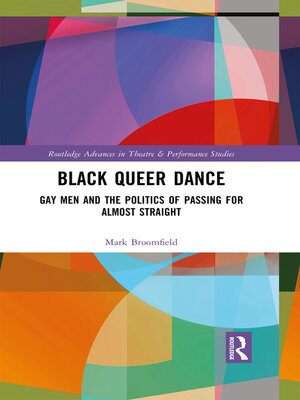Black Queer Dance
ebook ∣ Gay Men and the Politics of Passing for Almost Straight · Routledge Advances in Theatre & Performance Studies
By Mark Broomfield

Sign up to save your library
With an OverDrive account, you can save your favorite libraries for at-a-glance information about availability. Find out more about OverDrive accounts.
Find this title in Libby, the library reading app by OverDrive.



Search for a digital library with this title
Title found at these libraries:
| Library Name | Distance |
|---|---|
| Loading... |
This book is a groundbreaking exploration of black masculinity and sexual passing in American contemporary dance.
Based on ethnographic fieldwork in New York City, the book features keen observations and in-depth interviews with acclaimed dancer-choreographers Desmond Richardson and Dwight Rhoden Co-Artistic Directors of Complexions Contemporary Ballet and Ronald K. Brown, Artistic Director of Evidence. Black Queer Dance examines one of the most visible crucibles for masculinity—the male dancer—and illuminates the contradictory and conditional acceptance of black gay men's contributions to American modern dance. The book questions the politics of "coming out" and situates a new framework of "doing out" for understanding marginalized black LGBTQ people in the 20th and 21st century. Narratives of black queer male dancers' performance of identity reveals the challenges posed navigating strategic gender performances in a purportedly post-gay and post-race American culture. Broomfield demonstrates how the experiences of black queer, gender nonconforming, and nonbinary men expose the illusions of all masculine gender performances. Drawing on masculinity studies, dance studies, critical race and performance theory, and queer studies Black Queer Dance implicates the author's embodied history, autoethnography, memoir and poetry that shines light on how black queer men offer an expansive vision of masculinity.
This book will be a vital read for graduate and undergraduate students within dance and performance studies.







